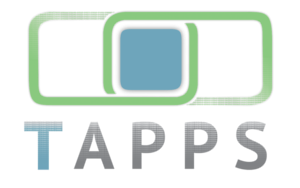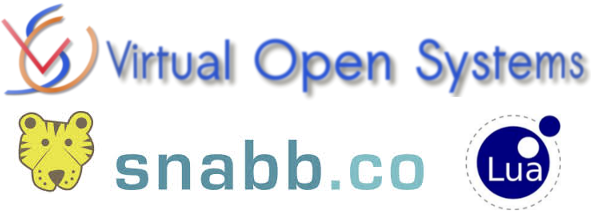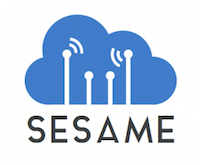Virtual Open Systems Newsletter
In this edition, Virtual Open Systems highlights its latest development activity, scientific dissemination and innovation projects related to Networking Functions Virtualization (NFV) user space virtual switch. In addition, QEMU extensions development towards a parallel execution and automotive mixed-criticality research activities are described.
- Product development: VOSYSwitch user space virtual switch
- Architecture research: Trusted APPS (TAPPS) for open CPS
- NFV-SDN dissemination: Virtual Open Systems at IEEE NFV-SDN conference
- Open Source leadership: Parallel QEMU open source development
- Leading innovation: Small cells coordination for multi-tenancy edge services (SESAME)
Network Functions Virtualization NFV virtual switch, VOSYSwitch and Small Cells, Mixed-Criticatility and Parallel QEMU

Virtual Open Systems develops VOSYSwitch, an innovative virtual switch for NFV Infrastructures which combines the performance of SR-IOV with the benefits of a user space software switch (i.e., flexibility, programmability, portability, etc.). VOSYSwitch extends the SnabbSwitch open source project, written in Lua. By making use of LuaJIT trace compiler, VOSYSwitch is able to optimize dynamically its execution depending on the traffic flow history. VOSYSwitch outperforms the standard software switching technologies, providing performance comparable with NIC static allocation (VFIO and SR-IOV). Finally, VOSYSwitch design is architecture agnostic, thus seamlessly meant not only for x86, but also for ARMv8 accelerated heterogeneous server platforms.

With its activity in the H2020 TAPPS project, Virtual Open Systems is designing a novel software infrastructure to support coexistence of a safety critical Real Time operating system along with efficient In Vehicle Infotainment (IVI) virtualization, extended with embedded accelerators (e.g., GPUs, FPGAs, etc.). TrustZone and virtualization technologies based on Linux/KVM are used to isolate real time automotive tasks (e.g., CAN bus interaction, advanced driver assistance systems functions, etc. ) from third party applications coming from automotive graded web apps providers.

Virtual Open Systems has been selected to present a scientific paper at the IEEE Conference on Network Function Virtualization & Software Defined Networks (NFV-SDN), which will be held in San Francisco on November 18th-21st 2015. The name of the article is "SnabbSwitch userspace virtual switch benchmark and performance optimization for NFV", and consists in an extensive virtual switches benchmark study for KVM virtual machines in NFV environments. The paper details the performance of SnabbSwitch, the open source project which gives foundation to VOSYSwitch, compared to OVS, OVS-DPDK, Linux bridge, VFIO and SR-IOV. VOSYSwitch performance results compare similar to those of hardware solutions (e.g., VFIO and SR-IOV) and better of OVS, OVS-DPDK and Linux bridge.

The commitment of Virtual Open Systems towards a real, multi-threaded QEMU has continued over the last months, with several patches shared by the company with the qemu-devel mailing list. Virtual Open Systems will continue to support and follow actively the development of this feature, that might be included in the official tree next year. Multi-threaded QEMU aims to enhance QEMU to be an even more suitable solution for modern, multi-core, SoC emulation and prototyping. Thanks also to the Virtual Open Systems contribution, QEMU will once again prove itself to be the most advanced open-source system emulator available.

SESAME is an EC H2020 project which targets 5G networking innovation by defining a new concept of small cell which supports virtualization and multi-tenancy through the combination of Network Functions Virtualization and Edge Cloud Computing paradigms. During this project, Virtual Open Systems will develop virtualization extensions to accelerate virtual machines computing and networking performance; the former will be enhanced by means of VFIO, API remoting and hardware assisted virtualization for accelerators (e.g., GPU, FPGA, etc.), the latter will use shared memory and user space virtual switches such as VOSYSwitch.
- Newsletter 2013 09
- Newsletter 2014 03
- Newsletter 2014 09
- Newsletter 2015 03
- Newsletter 2016 03
- Newsletter 2017 09
- Newsletter 2018 03
- Newsletter 2016 09
- Newsletter 2020 09
- Newsletter 2017 03
- Newsletter 2018 09
- Newsletter 2019 03
- Newsletter 2023 12
- Newsletter 2019 09
- Newsletter 2020 03
- Newsletter 2021 03
- Newsletter 2020 09 jp 日本語
- Newsletter 2022 09
- Newsletter 2022 03
- Newsletter 2021 03 jp 日本語
- Newsletter 2021 09
- Newsletter 2021 09 jp 日本語
- Newsletter 2024 06
- Newsletter 2022 09 jp 日本語

 VOSySofficial
VOSySofficial




